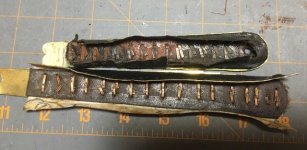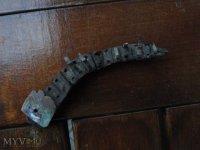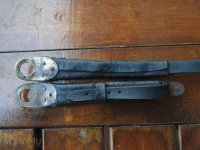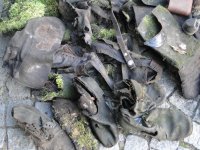Wojtek, I'm glad I could help. To disassemble the original chinscales; I used Brian's technique of placing them in a baggy with a slightly watered down sponge. Over an 18 hour period, I slowly removed the other layer of the very thin and fragile leather covering on the back of the chinscales to access the areas that require repair. Unfortunately, some of the outer covering leather ripped, but what can you expect for something put other 100+ years ago and worn in the field before coming into a collectors' hands.
Best regards,
John
PS I will tell Kathie you said hello.
The original Chinscales are on top, repro on bottom:

Best regards,
John
PS I will tell Kathie you said hello.
The original Chinscales are on top, repro on bottom:




